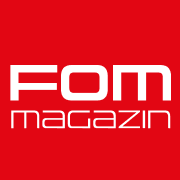Formal meetings and assemblies must comply with statutory requirements. With specialized software, organizers can create legal certainty for digital and hybrid formats.
Everyone knows online meetings by now: log in, check camera and microphone; does the background look good? Video calls have become part of everyday business life. For meetings such as short check-in calls or sales discussions, ordinary video chat platforms like Zoom or Microsoft Teams are sufficient. For formal online meetings, however, the video call all-stars quickly reach their limits.
What are formal online meetings?
In contrast to informal meetings, formal meetings such as shareholder meetings, association meetings, club meetings or committee meetings follow a precisely defined procedure. This is specified by the bylaws of the respective organization. For example, voting and elections must follow clear rules. When such meetings are held digitally, they are referred to as "Formal Online Meetings" - or "FOMs" for short.
Since there had been little experience with FOMs and there was no legal basis for them, they were mainly held offline. During the Corona crisis, formal meetings suddenly had to be digitized as well. Therefore, the legal situation was changed and companies and public institutions were forced to use digital formats. This made them appreciate the many advantages of FOMs.
Does it always have to be online?
No! But online formats offer advantages:
Road works on the highway, lockdowns, train strikes or delayed flights can quickly lead to delays or even cancellations at face-to-face events. Many participants also find the journey too arduous, which is why they prefer to stay at home. Organizing large face-to-face events is also costly and labor-intensive.
Digital formats are cheaper and reliable. Nevertheless, face-to-face events naturally also offer advantages. Personal contact in particular is often the decisive reason why organizers opt for an offline format after all.
Whether you meet in person or digitally is no longer an either/or question. Hybrid meetings" have now also become established. They combine the advantages of both variants: Organizers can reduce costs because fewer premises and accommodations are needed. If complications such as traffic jams or lockdowns arise, prevented guests can also be connected digitally. Guests, in turn, can decide whether they want to arrive in person or connect from home.
Software solutions
Conventional video chat software does not meet the specific requirements of FOMs. For example, there are no or inadequate minute-taking features. However, if the organizer cannot prove that the meeting was held in accordance with the bylaws, it is open to challenge. For example, if someone disputes a voting result, the vote and possibly even the entire meeting must be repeated. In addition, conventional software solutions lack elementary functions such as proxy rules, agenda management or digital tools for elections.
There are already various providers on the market who have specialized in software for FOMs. However, they usually only cover partial aspects of FOMs. The challenge for the developer community in the next few years will be to design FOM solutions that meet the special requirements of these meeting formats.
Linkando as an example of holistic FOM software
FOMs will establish themselves as a new standard in the future. With FOM Magazine, we want to help bring together doers, thought leaders, legal experts, politicians and technology pioneers to shape this new trend together. FOMs offer a great opportunity for organizers, participants, service providers and also for the environment. We should use it together!






